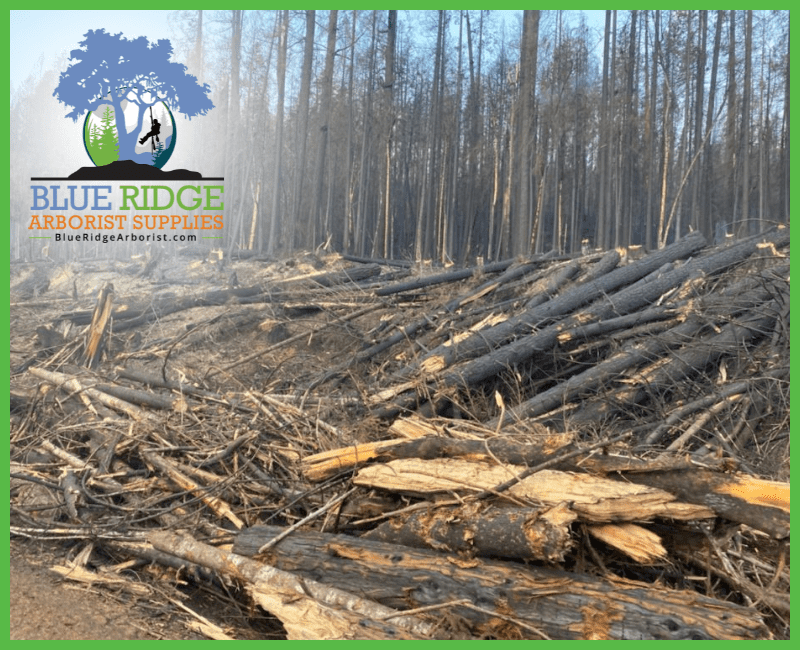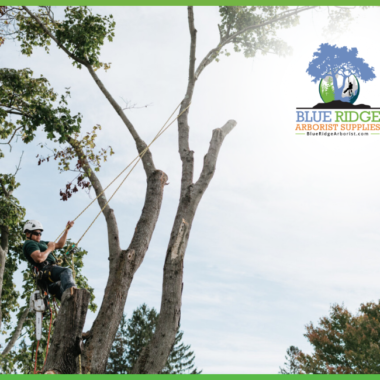Many people do not have knowledge of, or appreciation for, the diligence with which arborists operate. Detailed knowledge, qualifications, and experience are necessary for many big jobs — such as clearing hazardous trees after a wildfire, all of which were overlooked by the Oregon Department of Transportation during their cleanup efforts after last year’s wildfires in that state, as evidenced in this article.
Oregon has a lot of cleanup work to do after more than 1 million acres of land burned in last year’s wildfires.
That cleanup involves removing burned trees near roads and structures that could fall and create safety hazards. But which burned trees are truly hazardous and need to be removed?
More than 20 conservation groups sent a letter Tuesday to Interior Secretary Deb Haaland and Agriculture Secretary Tom Vilsack opposing the post-fire roadside logging proposed or actively being carried out by federal agencies. And a growing number of people are sounding alarms over excessive tree-cutting along scenic highways and protected rivers as the Oregon Department of Transportation and its contractors proceed with plans to cut nearly 300,000 trees deemed as hazardous.
The critics include arborists who have worked on the project and say the reckless tree-cutting operations across the state are being mismanaged and need to be stopped.
Images of roadside clear-cuts have sparked concern that contractors are rushing and cutting more trees than they need to because they want to cash in on Federal Emergency Management Agency funds that are expected to cover 75% of the hazard tree removal work.
Meanwhile, road closures surrounding the work make it difficult for the public to see which trees are being marked for removal.
But ODOT spokesman Tony Andersen says the state designed its hazard tree removal contracts to protect against cutting trees unnecessarily just to make more money.
He says safety is a top concern after last year’s wildfires left hundreds of thousands of dead and dying trees that could fall and hurt or even kill people driving along state roads.
“I just drove through the Archie Creek Fire area, and the feeling of driving through a corridor with dead and dying trees on both sides of you is an uneasy feeling,” Andersen said. “We’re working to identify, evaluate, mark and then remove those trees so that no more lives are lost at the hands of 2020 wildfires.”
While the state is moving carefully to remove trees, Andersen said, “there’s bound to be some urgency there because the faster you remove them, the less time there is for them to hurt anyone.”
According to Andersen, the state is using “professional certified arborists and professional certified foresters” to evaluate the burned trees using “a long list of criteria” to decide which ones should be marked for removal.
“No one in our task force wants to cut any more trees than we need to,” he said. “All this work is dictated and outlined by a specific set of criteria that provide the guidance for which trees are determined hazard trees and which trees will be removed.”
But arborists involved in developing and applying that criteria say it’s inadequate and it’s being used to remove trees that aren’t actually hazardous.
Arborists flag problems

Tom Ford worked as the head arborist for CDR McGuire, a company based in Florida that ODOT hired on a $75.5 million contract to oversee the state’s wildfire debris removal project.
The company was contracted to provide guidance on which hazard trees to cut in nine different parts of the state that were impacted by wildfire. Initial estimates projected a need to remove more than 295,000 hazard trees.
Ford says his role with the company was required by FEMA to ensure environmental stewardship in the hazard tree removal work that the federal agency has already funded with $140 million.
Part of his assignment was the hefty task of writing a set of procedures for arborists to follow as they decided which burned trees near roads and structures should be removed.
As a certified arborist and hazard tree assessor with 30 years of experience falling hazard trees, Ford knew he was playing a critical role in a huge, complicated tree-removal job that very few people are qualified to do.
“It’s the most important role in the whole project — that’s how I interpreted it and that’s how I approached it,” Ford said.
He submitted what he thought was just the first draft of operating procedures for choosing which hazard trees to cut. But he says that draft wasn’t reviewed by other experts, and he received no feedback from his managers before it was implemented to guide the marking of hazard trees.
“What I proposed to ODOT was really simple because I wanted to just give people something they could get to the table with and start to argue and hammer out a real set of assessment guidelines,” Ford said. “It was never, ever, ever meant to be used in the field.”
Ford said the whole process was rushed, leaving arborists in the field without proper guidelines for marking which trees should be cut and which ones should be left standing to avoid unnecessary environmental damage.
“There was incredible pressure on me by people who didn’t understand what had to be done in order to do marking with due diligence,” he said. “It was almost like they didn’t think there were consequences to doing it wrong.”
The project has already marked about 64,000 trees and removed about 24,000 of them statewide, according to ODOT. But Ford said the criteria arborists are using to mark trees for removal is inappropriate and inadequate.
“They’re nowhere near resolving which trees should be cut,” he said. “We have no real supportable criteria for how we’re marking trees and we never have from the beginning.”
ODOT declined to comment on Ford’s employment with CDR Maguire, and the company has not responded to a request for comment.
But Andersen said there were multiple agencies involved in determining the criteria that are being used to mark trees for removal, including the U.S. Forest Service and the Oregon Department of Environmental Quality.
Ford said he was notified in January that he was no longer working on the project. He said he doesn’t know why he was let go, but it’s clear to him that the whole project is moving way too fast and needed more time to develop the proper guidelines for removing trees and train tree assessors.
“They’re so far into something that’s so wrong,” he said. “The best thing that we can do is just stop it and start over.”
Ford said ODOT doesn’t need to be cutting so many trees so quickly because many fire-damaged trees will take years to become hazardous.
“As foresters, what do we do to bring this forest back to a state of health? We don’t cut down every single tree as fast as we can just because it’s partially burned,” he said. “But that’s what they’re doing.”
A mismanaged operation
Matt Allen, another arborist who worked on ODOT’s hazard tree removal project in the field, says he saw the consequences of not having solid criteria for which trees should be cut.
Allen is a certified master arborist who is tree risk assessment qualified, an additional certification known as TRAQ. He was hired in December to work for Mason Bruce & Girard, a Portland-based environmental consulting company working with CDR Maguire to identify hazard trees.
According to ODOT, the consulting company’s role is to help check the work of CDR Maguire employees and ensure hazard trees are marked correctly for removal.
Allen was directed to assess hazard trees along Oregon Route 138 on the North Umpqua River in Southwest Oregon, where the Archie Creek Fire burned more than 131,000 acres.
He says the people working alongside him for CDR Maguire were not certified arborists.
“They were a bunch of inexperienced people from the Southeast U.S. that had no idea what they were doing out there,” he said.
Allen says he helped train these employees in tree species identification so they could enter data into a phone app that applied an algorithm to determine which trees should be marked for removal.
The guidelines for choosing which trees were hazardous were constantly changing, he said, and the disorganized operation resulted in marking a lot of trees for removal that he didn’t consider to be hazardous.
“Most of these trees are burned, scorched and eventually will die, but very few if any are actually hazardous at this time,” he said. “I can count on one hand how many actually hazardous trees I found after tagging close to 5,500 trees for removal.”
Allen says he felt like the companies doing the work were trying to mark the trees as quickly as possible so they could be removed before the public had a chance to learn what was happening.
“I’ve never seen such a mismanaged operation in my life,” he said, noting that he hasn’t worked on large-scale projects like this before but has done a lot of hazard tree assessments. “It just seemed like they were flying people out of the Southeast and throwing bodies at this project so they could continue to invoice and continue to bill out.”
Sometimes, he said, up to a dozen employees would spend a whole day collecting sticks and debris. Meanwhile, he wasn’t hearing much from the two companies managing the project and wound up overseeing the tree assessments himself with “little to no guidance.”
Allen submitted his resignation in mid-February and explained in a note that the project didn’t align with his values.
“This was pushed way too fast,” he said. “From an arboriculture and forestry perspective, these trees aren’t going to be hazardous for one, two or three years. And it really just started feeling like a money grab.”
Allen said he believes most of the trees he marked would have died and become a hazard in the future, but they were not hazardous when they were marked for removal.
“None of them were actually a hazard tree, but they’re billing it that way,” he said. “It seems like a betrayal to the Oregon people, the indigenous people, landowners and to the natural environment.”
Erin VanDehey is a principal with ODOT contractor Mason, Bruce & Girard. VanDehey. She says the project has evolved since Ford and Allen left and is now based on the best available science.
Is this a money grab?
Critics of the state’s hazard tree removal project have raised concerns that the companies doing the work have a perverse incentive to mark more trees for removal in order to make more money per tree.
But Andersen says that’s not how the contracts work.
So far, ODOT has spent about $5.5 million on hazard tree removal, he said, and that money is drawn down from the $140 million expedited payment the agency received from FEMA.
To ensure accountability, Andersen said, the project requires three rounds of hazard tree evaluation by three different groups, including arborists and foresters and a monitoring firm.
Tree removal is done by a separate set of contractors who face a $2,000 fine if they cut a tree that isn’t marked for removal.
“There is a very thorough review process, accountability process and quality control process,” Andersen said. “Each one of these trees is individually evaluated and assessed and assessed again and then assessed the third time.”
However, the three groups doing the evaluations are made up of employees of just two companies: CDR Maguire and Mason, Bruce & Girard.
Those two companies are billing ODOT based on the number of hours worked, not by the number of trees removed. Another set of contractors come in to remove the marked trees, and they bill ODOT for the number of trees removed. According to their contracts, those tree-cutting companies can make between $200 and $8,000 per tree depending on the size and the difficulty of removal.
“It has nothing to do with the market value of the lumber,” Andersen said. “It’s going to cost more to remove trees from really steep terrain or terrain you don’t have access to than on a flat, easily accessible piece of land.”
In fact, the contractors cutting the trees don’t get to sell them, Andersen said, because the trees belong to the landowner.
Andersen said some of the trees removed from public land are being donated to conservation groups for habitat improvement projects while others are being chipped up and used for erosion control along streams.
“Ultimately we’re doing this for safety, not for any type of revenue,” Andersen said, noting that logs stacked in staging areas may be sold under a separate contract later so the proceeds can help finance the removal work.
Identifying a hazard tree
The science of identifying hazard trees can be complicated, especially when weighed against the risk of someone getting hit by a falling tree on a public road.
FEMA approved the removal of hazard trees that present an “immediate threat to life, public health or safety” and limited the authority to remove those trees to “trees identified as Danger, which typically are those with imminent failure potential.”
But even arborists who have only seen pictures of the trees that have been removed are raising questions about how the state is deciding which trees are posing an “immediate threat.”
Rick Till, a certified arborist who also has tree risk assessment qualification, said the wide swaths of trees removed along the road in the Breitenbush area raised major concerns for him that hazard tree removal operations had gone astray.
“Marking every tree in a corridor as an immediate threat to safety should be a huge red flag that something is wrong,” he said. “Blanket clear-cutting is beyond any plausible application of hazard tree assessment methodology.”
Many of the criteria the state is using to determine whether trees are hazardous have to do with the amount of the tree that is burned or damaged by fire such as the crown, bark or roots.
Bev Law, a professor emeritus at Oregon State University’s School of Forestry, said the external appearance of a burned tree is not a good way of judging whether it’s going to die and needs to be removed for public safety.
“Trees are generally designed to withstand fire,” she said. “These external indicators of fire damage, such as crown scorch, can appear dramatically damaging, but actually they pose little risk to the tree’s long-term survival.”
Instead of just looking at the outside of the tree, she said, you can assess its physiology by measuring how much water is moving through it.
“It’s really quite simple,” she said. “It’s with an instrument that’s actually made in Corvallis. It’s much more accurate in determining what’s actually happening inside the tree.”
Law said she recently saw the results of a hazard tree removal operation along a road near Opal Creek.
“It looks like way too much was removed,” she said. “Some of those trees were very healthy. They obviously had no scorch on them or just a little scorch, but they looked just fine and they were stacked high on the side of the road.”
Law, Till, Ford and Allen all agreed it can take years for burned trees to become hazardous, but the state doesn’t plan to wait that long to see which trees need to be removed.
Andersen said arborists are monitoring trees for a few months to see if they become less hazardous over time but the state is sensitive to the risks involved in leaving potentially hazardous trees standing.
“We wouldn’t monitor for years with safety being the top concern if that tree dies,” he said. “I don’t think anybody wants the unfortunate job of going and telling the family that someone died on the roadway because we were monitoring that tree that inevitably fell during an ice storm.”
A bird’s-eye view
Right now, Oregon Route 224 along the Clackamas River in the Mt. Hood National Forest is closed to the public while hazard trees are being removed.
Michael Krochta with the environmental activist group Bark wanted to know more about the hazard tree removal operation along the Wild and Scenic stretch of the Clackamas River that follows the highway. The U.S. Forest Service also has plans to remove hazard trees along other roads in the area.
With the road closed there aren’t many ways to see the area right now. So, his group decided to pay $2,500 for a helicopter flight.
“These things are moving forward really fast, and there hasn’t really been too much opportunity for public input,” Krochta said. “Flying in seems to be just about the only way to be able to really get a sense of what things look like out there on the ground.”
The group arranged for videographers to record video footage of the hazard tree cutting along the highway and nearby power lines, and in some cases Krochta could see that some of the cut trees still had green tops and some were cut very close to the Clackamas River’s edge.
“Cutting a whole lot of trees really quickly, possibly without really checking thoroughly to see if they are a hazard, that’s definitely a concern,” Krochta said. “In places like the Clackamas River and others that are such important river corridors for people, it really makes sense for these agencies to move forward with a lot of caution and patience.”
Democratic state Rep. David Gomberg lives in Otis, where the Echo Mountain wildfire destroyed homes and left many burned trees. He’s been watching the cleanup and removal of hazardous trees for months, and he’s been seeing a lot of trees getting hauled off lately by log trucks.
“My concern is that I think we need to do cleanup, but I think we need to do it judiciously and cautiously and leave as much behind as we can,” he said. “My neighborhood has been transformed from a quiet, wooded neighborhood to intermittent clear-cuts. And this is not timber land.”
Gomberg said people are being asked to sign forms that allow trees to be cut and removed without knowing they have the option of leaving the trees standing. He’s planning to use his position on Legislature’s House Committee on Wildfire Recovery to find out more about how ODOT is managing the hazard tree removal project.
“I’m not an expert arborist. I don’t have the knowledge and expertise to tell you whether these decisions are being well made. But as a legislator, I’ve certainly got the ability to find people who do know and ask a lot of questions,” he said. “I want to know that we’re cutting trees to make Oregon better — not to make money.”
Along with specific qualifications and dedication, arborists require special tools and equipment to do their job. Blue Ridge Arborist Supplies has everything you need to do your work safely, efficiently, and effectively. Call us today! 540.212.7862 or find us on Facebook.
Reference: [https://www.opb.org/article/2021/04/14/arborists-say-odot-post-fires-tree-cutting-is-excessive-rushed/]










